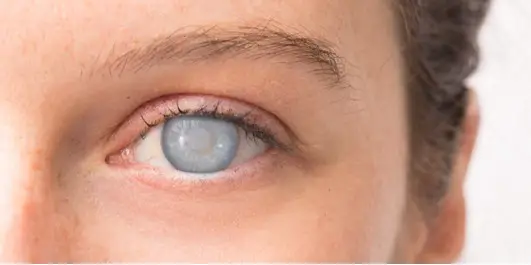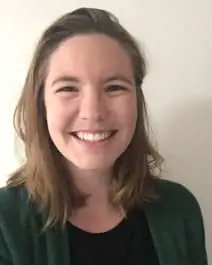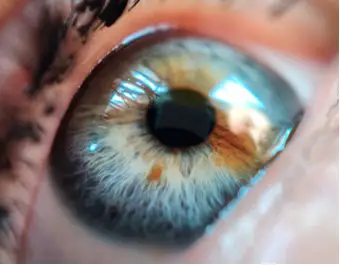We can all describe the Hollywood death scene: final words are spoken, and then the person falls over motionless, their eyes staring off at nothing. Open eyes are used in the film industry to convey that the person is really dead, not just unconscious.
The actual reason why people die with their eyes open are:
While we tend to associate open eyes with death, your eyes can actually be open or closed when you die.
Your eye protrudes slightly from your face, so the muscles in your eyelids are active when your eye is closed. When you die, the muscles relax and can spread apart, causing the eye to open.
The Eyelids and Death
When your heart stops beating, and you stop breathing, you are considered clinically dead. When clinical death occurs, the muscles in your body relax, and you go limp. This is true for the muscles in your eyelids as well.
Your eyelids are controlled by two muscles; one that opens your eyelid and one that closes your eyelid. Because these muscles are opposing groups during life, when they both relax, it typically allows your eyelids to either stay in their current position or move towards a neutral position. Because of this, eyes typically remain partially open after death.
In 2009, Dr. Alistair D. MacLeod conducted a study of 100 individuals in hospice care to determine the prevalence of eyelid closure during death. His research identified:
- 63% of patients died with their eyes closed
- 37% of patients died with their eyes partially open
The researchers concluded that the state of the eyes at the time of death was not only influenced by the muscles that controlled the eyelid. Other factors that would potentially influence whether the eyes were open or closed at the time of death included:
- The fluids of your eyeball can cause suction at the eyelids, keeping the eyes closed when the muscles relax.
- Central nervous system tumors and/or acute hepatic encephalopathy appeared to be a pre-mortem risk factor of bilateral ptosis (partially open eyes) at death.
- Medications can influence the moisture, movement, and status of the eyes.
- 40% of the patients who had open eyes at the time of death also had liver failure.
- Open eyes at the time of death may be linked to illnesses that impact the central nervous system.
- Muscle spasms can occur as the body begins to shut down, which can cause the eyes to open or close even after clinical death.
Overall, there are too many independent variables to consider to be able to conclude whether your eyes will be open or closed when you die. If your loved one passes away, it can be helpful to know what to expect, so you are not surprised if they open their eyes as they die.
The Muscles of the Eye and Eyelid

Your eyes are controlled by six extraocular muscles, known as the superior rectus, inferior rectus, lateral rectus, medial rectus, superior oblique, and inferior oblique. All six muscles work in tandem to perform any movements that your eyeballs make.
Your eyelids are controlled by two main muscles:
- The orbicularis oculi is the sphincter (constricting) muscle of the eyelids. It primarily controls the eyelid’s gentle involuntary movement, such as blinking or staying closed while sleeping.
When you close your eyes forcefully, the orbicularis oculi makes your eyes close, and the skin of your forehead, temple, and cheek stretch towards your eye. The orbicularis oculi is so strong that its constrictions eventually give you “crows’ feet!”
- The levator palpebrae superioris is the antagonist of the orbicularis oculi. The levator palpebrae superioris raises your upper eyelid to expose the eye.
People who can keep their eyes open for long periods of time have strong levator palpebrae superioris muscles!
When you die, all of the muscles in your eyes and eyelids relax, along with the other muscles in your body.
Additional Ocular Changes after Death
Death can cause rapid and dramatic changes to the body as it shuts down. The eyes are no exception.
Near death and post mortem, the eyes go through an array of changes that are due to the body’s natural reaction to dying. These changes can include:
- Corneal Opacity

Corneal opacity is when the cornea, the transparent structure of the front of the eye, becomes hazy or cloudy.
Corneal opacity, also known as corneal clouding, begins to occur about two hours after death. In fact, corneal opacity is one of the factors used by coroners to determine the time of death.
The time of death can also be determined based on potassium levels in the eye. When a person dies, the blood vessels in the body break down, releasing potassium. In the eye, this process occurs more slowly and more predictably, making it a good indicator of time of death.
- Loss of Corneal Reflex
Corneal reflex refers to your automatic response to closing your eyes when something touches your cornea. Because the brain controls this reflex, the corneal reflex shuts down when the brain does (see “The Pain of Dying” for additional information about how the brain shuts down after death).
- Loss of Pupillary Reflex
When the lighting around you changes, your pupils react by dilating and constricting, which alters the amount of light that is able to enter the eye. In healthy individuals, both of your pupils will dilate and constrict in the same way. When your pupils dilate and constrict, it is known as the pupillary reflex.
When you die, your iris muscles relax, which causes your eyes to relax in a mid-dilated position (known as the “cadaveric position”). However, when rigor mortis sets in, pupils may dilate independently of one another as the muscles tense. After about two days, rigor mortis will fade, and the pupils will once again return to a mid-dilated state.
- Tache Noir de la Sclérotique
Tache Noir de la Sclérotique, also known as black spot of the sclera, occurs when the sclera (the white of the eye) is exposed to air.
If the eyes remain open for multiple hours after death, a film of cell debris and mucus forms two yellow triangles on the sclera on either side of the iris. The triangles slowly darken from yellow to brown to black, and the surface wrinkles and accumulates dust.
Why We Close the Eyes of the Dead
Throughout history, humans have associated open eyes at death with pain and bad omens. Some of the more common stigmas associated with open eyes include:
- That the deceased is fearful of what comes next because of how they acted throughout their lives. In the media, this idea is subconsciously reiterated through the use of open eyes at death when discussing criminals and villains. For example, at the execution of the Oklahoma City bomber, newspapers reported “Bomber McVeigh dies, eyes wide open.”

- An indication that the deceased’s judgment after death was not favorable. For example, traditional Chinese and Taoist beliefs indicate that the dead must be judged in hell and punished for the sins they committed in life. If the deceased appears fearful or in pain after death, it can be seen as a direct representation of what is happening in the afterlife.
- There are also numerous cultures that have folklore and superstitions surrounding open eyes at death. Some believe that open eyes at death allow the devil to look into the world of the living, while others believe it may mark those present for death as well.
However, not everyone has negative associations with open eyes at death. For example, some sects of Christianity believe that open eyes are an indication that the deceased was seeing God prior to death. In this way, open eyes at death can be seen as a comfort, rather than a curse.
Closing Eyes after Death
One of the biggest misconceptions about death in Hollywood is that the eyes of the deceased can be closed with a gentle wave of your hand. That’s not the case. In fact, once rigor mortis sets in, closing the eyes of the deceased can be near impossible. It is no surprise then that humans have come up with a myriad of ways to keep eyes closed after death.

Historically, many cultures closed the eyes of the deceased by placing small coins over the eyelids to hold them in place. The custom is primarily associated with the Greeks and Romans. However, in Western Europe, a similar use of coins on the eyes was used by the Celts and Germans.
The custom of using coins on the eyes originated in Greece, where coins were placed over the eyes or in the mouth of the dead to pay passage across the Styx River.
According to Greek mythology, the recently deceased was sent to Hades, or the underworld. In order to pass over the river Styx, the deceased would have to pay a toll to the boatman. If the dead were not buried with coins on their eyes or in their mouth, they would not be able to cross and would be forced to wander around the entrance of Hades for eternity.
Archeologists have discovered human remains with other eye coverings as well. In addition to coins, eyes have been closed with rocks, shells, pieces of pottery, and numerous other things. For many cultures, closing the eyes of the deceased was an integral part of the body preparation ritual after death.

Today, doctors, coroners, and morticians will still close the eyes of the deceased after death to give the impression that the deceased is resting and at peace. Morticians use a number of techniques to keep the eyes in place and closed for funerals and viewings, including:
- Putting semispherical plastic cones with a grated surface over each eye, behind the eyelids, to hide the evidence of the eyes sinking into the eye socket. The plastic helps maintain the shape of the eye, while the grated surface helps keep the eyelids closed.
- Carefully applying Thin trails of adhesive gel to the edge of the eyelids to keep them closed.
- Regularly applying moisture-capturing cream to the eyelids to keep the skin hydrated and soft-looking.
Final Thoughts
Despite all of the lore and beliefs associated with the eyes at death, the fact remains the position of a person’s eyes and eyelids at death is primarily based on biological factors. It can be a comfort knowing that a loved one’s eyes opening or closing at the time of death does not mean they are, or will be, in pain. For more information on what happens to your body when you die, see “Death and Poop” and “The Pain of Dying.”

Sources:
https://dying.lovetoknow.com/what-is-death-like/why-do-some-peoples-eyes-open-before-death
https://www.ncbi.nlm.nih.gov/books/NBK539741/
https://www.enotes.com/homework-help/what-was-the-purpose-of-placing-the-coins-over-156977
https://www.theoi.com/Khthonios/Kharon.html
https://classroom.synonym.com/funeral-home-human-body-preparation-12079618.html

